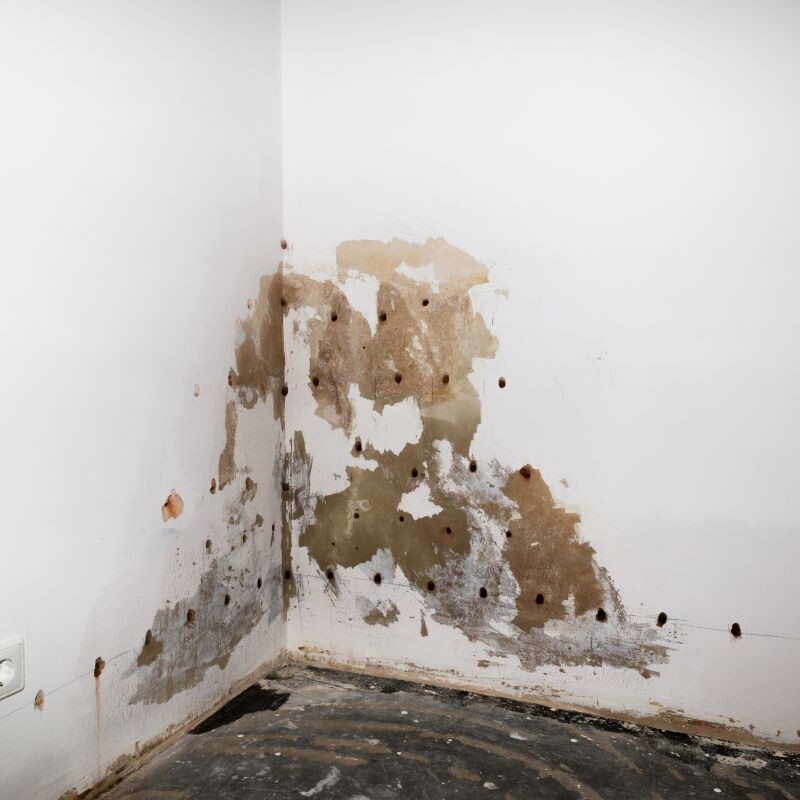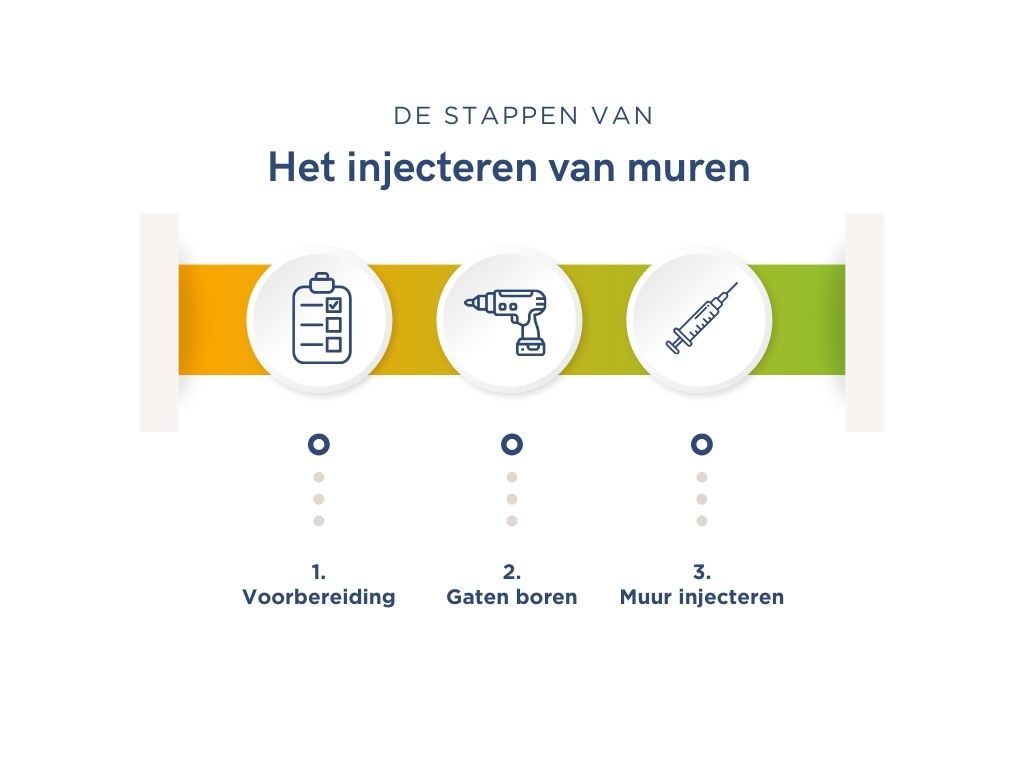Are you suffering from damp walls? You may be dealing with rising damp. It is important to address this problem to prevent further damage. Fortunately, it is often possible to treat rising damp yourself. In this article we share all the essential information about this.
Rising damp, a moisture problem you'd rather not have
Rising damp is caused by groundwater being absorbed by the foundation and walls, this because there are problems with the water barrier in the wall. This leads to moisture spots that are mainly visible close to the ground, but the moisture can also spread further into the wall. Both interior and exterior walls can suffer significant damage as a result
This moisture problem can occur in both old and new homes, and it brings with it all sorts of negative consequences. Some examples include:
- Loose plaster, mold or spots on the walls
- Structural damage to the home
- Health problems, mainly respiratory
- A significantly higher energy bill
- ...
So it is very important to treat rising damp at its base. It is often possible to treat the rising damp yourself.
Treating rising damp yourself with wall injections
When you want to treat rising damp yourself, there is usually only one method effective: injecting the wall. This involves drilling holes in your wall and then filling (read: injecting) them with a moisture-resistant gel. That gel then spreads deep into the pores of the wall. The chemical components of the gel react with the elements in the wall, resulting in a hydrophobic layer that blocks rising moisture.

Step by step treat rising damp yourself

Step 1: the preparation
A prepared man is worth two. It's no different here. These are some preliminary steps it's best to take before treating rising damp yourself:
- Make sure you are certain that the cause of the damp wall is rising damp. This is because each moisture problem requires a specific approach to moisture control. If the damp wall is caused by another factor, injecting the walls will not be effective in solving the problem.
- Further remove any damaged plaster to about 20 centimeters from the affected area.
- Repair all holes and cracks with a suitable repair mortar.
- Finally, make sure the substrate is completely dust-free.

Step 2: drilling the holes
After the preparation, it's time for the real work: drilling the holes in the wall. Holes should be drilled along the full length of the floor. The holes should be spaced 10 centimeters apart each time, and they should come just above the floor pass. It is recommended that you mark off the holes first.
After determining the locations of the drill holes, measure the thickness of the wall to be treated. The drilling depth should be about 90% of the wall thickness, often this amounts to 2 inches less than the thickness of the wall. To actually drill the holes, it is recommended to use a long 12-milimeter stone drill bit. After drilling, the holes should be carefully cleaned with a vacuum cleaner to remove drill cuttings.

Step 3: injecting the wall
After drilling the holes, you can inject the walls. You fill the holes with the damp-proofing agent, and you do this using a caulking gun or spray gun. Do this as follows:
- Insert the syringe hole as deeply as possible.
- Start injecting in the back, moving in a smooth motion to the entrance of the hole. Stop about 1 centimeter from the wall surface.
- Repeat for all drill holes, making sure that each drill hole is completely and evenly filled.
- Use the inches left over to seal the drill holes with cement mortar. This provides a nice finish.
A handy tip to remember: if emulsion gel is spilled, it is advisable to clean the spill immediately with warm soapy water. By doing this quickly, you prevent the emulsion gel from drying up and becoming more difficult to remove.

The pros and cons of treating rising damp yourself
There are some advantages to injecting your wall yourself. For one, you can cut costs, and you can completely control when you inject your wall. You also have more control over the entire process and can closely monitor your wall and notice any problems in a timely manner.
However, performing wall injections yourself also does not come without dangers:
- Wall injections are an effective method for fighting rising damp. However, it can be challenging to determine with certainty whether rising damp is actually the cause of the moisture problems in your wall. A thorough moisture analysis by experts is often needed to confirm this.
- Injecting a wall is a complex and invasive task that often requires experience and expertise. When you don't have adequate knowledge and skills, you run the risk of making mistakes.
- Moreover, mistakes can lead to worsening of the moisture problem or even cause additional damage.
- Finally, don't underestimate injecting walls. Injecting walls takes insight and patience. A wall can absorb 50 to 70 liters of moisture per meter, so it takes a long time to dry completely after treatment. Salpet formation can also occur in the interim, which also complicates the process.
Treating rising damp yourself: the conclusion
Although fighting dampness yourself is possible, it requires patience and precision. Nevertheless, we recommend hiring professional help, as it guarantees a correct execution and final solution. Due to favorable prices and a reduced VAT rate, professional moisture control is often not much more expensive.
Do you have a moisture problem, and suspect it could be rising damp? Our field engineers are true experts when it comes to this moisture problem. Contact AquaConsult now for a no-obligation free expertise.
Request more information and brochure
Answer the questions below and get more information and our brochure. Would you like to have the cost price calculated? Please indicate this clearly in the text field below and we will do the necessary.

